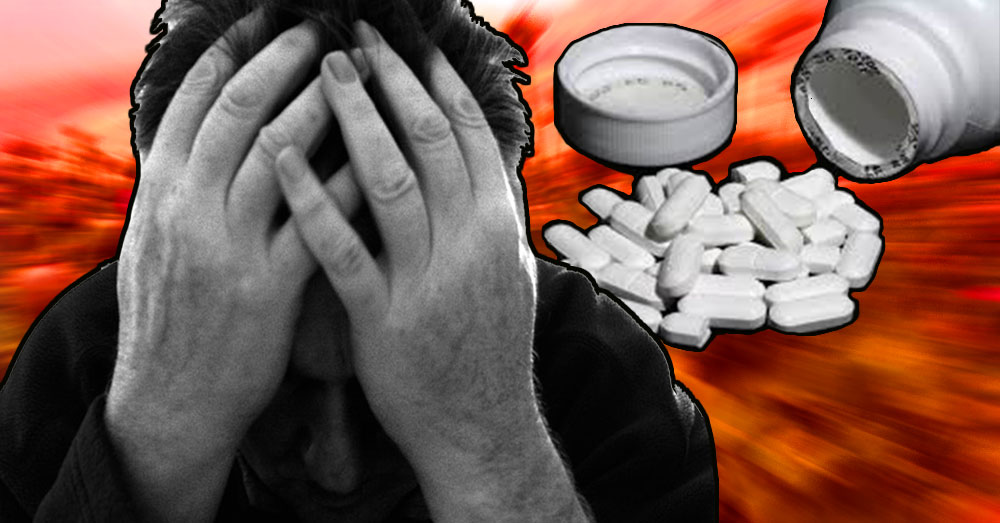Hope for Opioid Addiction

by Nirmala Raniga, Founder and Director
With the passing of acclaimed actor Philip Seymour Hoffman from a drug overdose, the international spotlight had once again focused on opioid and other drug abuse, a problem that cuts across all socio-economic boundaries, shattering the lives of everyone affected.
The US based National Institute of Drug Abuse (NIDA) defines opioids as medications that “reduce the intensity of pain signals reaching the brain and affect those brain areas controlling emotion, which diminishes the effects of a painful stimulus.” Essentially, opioids can become addictive due to their ability to relieve painful feelings. While these drugs tend to initially create feelings of euphoria, they also cloud cognitive function and produce alternate states of drowsiness and wakefulness.
Opiates are naturally derived from the opium poppy. Opioids are synthetic, or semisynthetic, opiate-like substances. Very often, individuals acquire opioids such as hydrocodone, oxycodone, and morphine through physician prescription for legitimate medical reasons. For instance, morphine is often prescribed to relieve surgical pain. Codeine is commonly prescribed as a mild pain reliever and cough suppressant.
Heroin, reaches the brain quickly, can be cheaper and easier to obtain than prescription opioids, and is particularly addictive. A recent NIDA article states, “nearly half of young people who inject heroin surveyed in three recent studies reported abusing prescription opioids before starting to use heroin.” With repeated use, heroin changes brain function, and those addicted become increasingly tolerant, requiring greater quantities in order to achieve its sought-after effects.
Once heroin enters the brain, it is converted to morphine and binds to opioid receptors in both the brain and other locations in the body. Not only do heroin users need greater quantities of the drug as they become more tolerant, but they also have to continue using heroin to avoid withdrawal symptoms. Heroin use slows respiration, which can prove fatal. Injecting heroin can also lead to the transmission of serious infectious diseases, and long-term usage can degrade the body and affect major organs.
According to the Foundation for a Drug-Free World, some 13.5 million people across the globe take opioids. In its 2012 “National Survey of Drug Use and Health,” the Substance Abuse and Mental Health Services Administration (SAMHSA) reports, “The number of persons with heroin dependence or abuse in 2012 (467,000) was approximately twice the number in 2002 (214,000).” A 2007 National Survey on Drug Use and Health indicated there were 153,000 heroin users in the U.S. Opiates, specifically heroin, played a role in 80 percent of drug-related fatalities in Europe and, in the U.S., the Centers for Disease Control and Prevention noted that heroin-related deaths across the nation increased 45 percent from 2006 to 2010.
Though statistics regarding opioid abuse can be startling, recovery from opioid addiction is possible. Currently, many rehabilitation facilities boast success rates of nearly 70 percent and low relapse rates of 15 to 30 percent. The highest documented success rates specifically for heroin recovery are achieved through long-term treatment programs, generally lasting three to six months and offering support, structure, and long-term aftercare programs.
Many successful programs offer medication-assisted treatment options to manage withdrawal and assist in maintaining abstinence and employ such prescribed substances as naltrexone, buprenorphine/naloxone, and methadone. Naltrexone, an opiate antagonist, blocks opiate receptors, produces no physical dependence and can be used when patients are free of withdrawal symptoms. In 2010, the U.S. FDA approved a safe and effective sustained release form of naltrexone. This injectable medication blocks the effects of opioids for up to five weeks. Known to block opioid cravings, buprenorphine/naloxone blocks the effects of other opiates, including heroin, and is approved for office-based treatment. Methadone is a controlled substance known to reduce opioid’s euphoric and sedating effects as well as reduce cravings and withdrawal symptoms. It does not produce euphoria or sedation in patients receiving a stable dose and allows those in recovery to work and participate in society. Because methadone has a long half-life and is metabolized slowly, patients need only take it once a day.
According to Health Canada’s publication, “Methadone Maintenance Treatment,” a comprehensive approach to recovery is a critical factor in successful recovery from heroin addiction. The publication states, “The most effective opiate agonist maintenance programs provide methadone as well as other medical, behavioral, and social services”. In choosing the best treatment options, experts note that abstinence remains a viable alternative for those individuals who are young and have not experienced significant consequences to opioid use. However, evidence shows that there are improved outcomes with medication-assisted treatment. Patients should be made aware of all available options when choosing a treatment path. The most important factor in developing a treatment plan is an initial comprehensive assessment with a physician who has broad experience in addiction medicine.
The Chopra Addiction & Wellness Center takes a unique approach to treating addiction, addictive behaviours, depression, anxiety and post-traumatic disorder. The first treatment facility in North America to provide a holistic method for recovery, the Center employs both modern Western medicine and Eastern healing techniques, including Ayurveda to help guests heal their lives from the inside. When guests first arrive at the Center, they participate in collaborative, extensive mind, body, spirit assessments and individualized treatment plans are consequentially developed that are reviewed on an ongoing basis.
Guests have the benefits of 24-hour support staff, individual and group therapy sessions, yoga and meditation, massage, acupuncture and regular exercise both in nature and a fully equipped gym facility. After completion of our residential program, guests may be eligible to utilize our continuing care therapy incentive program that provides substantial funding for up to twelve weeks. The compassionate, supportive environment the Center has established offers the necessary structure and assistance to help address deeper issues and help suffering individuals identify and release stored emotional pain, destructive thought-patterns and life-damaging beliefs. These are replaced with more nurturing, self-empowering behaviors and experiences, which allows individuals to lead rich, rewarding, enjoyable lives.
The Chopra Addiction & Wellness Center is dedicated to assisting you in overcoming destructive behaviours and stepping into a life of happiness and well-being. Learn more about our programs.
